
NOTE: This post should have been published in October, but I was very busy and didn’t finish the writeup until now…
I have started my PhD in March, which means six months have passed, which in turn means the University is asking me to reflect on my progress so far. This also reflects the progress we are making in work package 2 of the Building from England’s Woodlands project, as the work on my PhD ties right into that. Of course this also means I have not made all this progress by myself, but with help from colleagues from ENU, NMITE, BE-ST and dRmm.
Overall, the PhD wants to develop an easier route to strength grading (UK) hardwoods. I am investigating if we could base strength grading assignments mostly on the testing of small (clear) specimens instead of full-sized ones, so we could use less timber for testing. This might allow even minor species to be used as structural timber.
I will also address problems around secondary properties (like compression strength and shear modulus) and how these can be calculated from primary properties (strength, stiffness, density). And then there are some questions around the adjustment equations given in EN 384, for example to adjust stiffness and compression strength to standard moisture conditions or calculating local MOE from global MOE.
But onto the update:
I have been quite lucky to start the PhD with a lot of background knowledge (because I had been involved in developing the project and convincing funders that these research questions are important). With the BfEW project we had also already procured some timber – only twelve boards, but that’s a start. This meant I could delve right into sawing and testing. This first batch of timber contained six species: ash, beech, sweet chestnut, oak, poplar and sycamore. We wanted to start with a broad range of species and narrow it down after consulting foresters and sawmillers and after getting an idea of the mechanical properties.
Testing takes a while, however, and in the meantime we have already spoken to many people who had an opinion on our species selection. Many people showed an interest in additional species, so that our list grew from six to twelve species, and now also includes birch, alder, lime, cherry, willow and red oak.
For some of these species we had the chance to sample trees ourselves, so we spent a day in the forest selecting “typical” trees that hopefully span a large range of timber properties. To get an idea about timber quality, we performed a dynamic stiffness measurement (using a hitman or IML hammer), and this was our most important selection criterion. Secondary criteria were tree diameter, tree height and a density estimate we obtained from a pilodyn measurement. We selected 5 logs of 5 species and these will be sawn into battens soon.

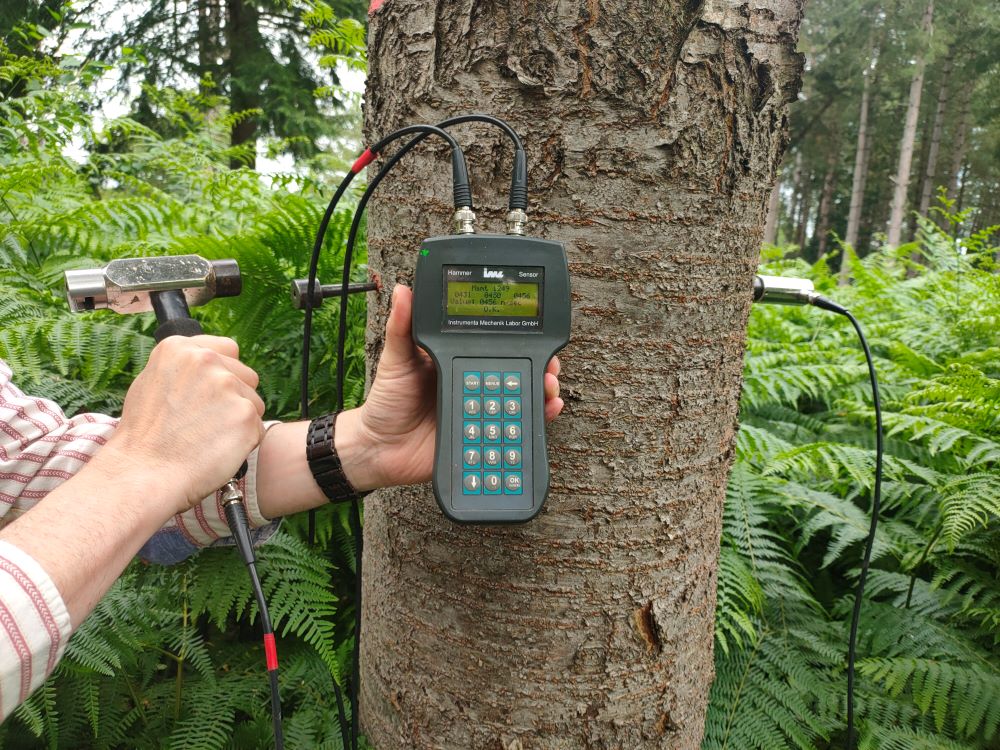
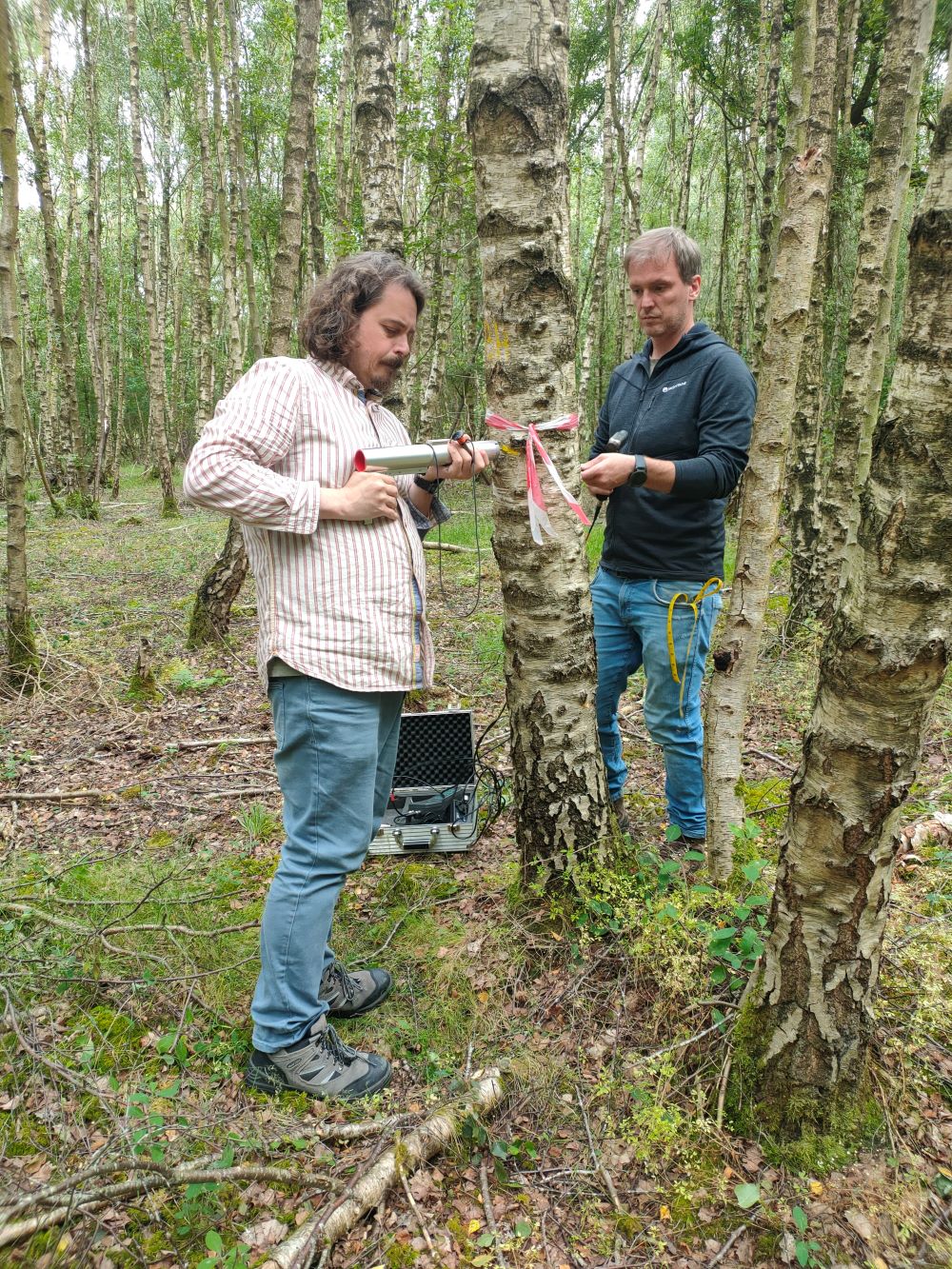

But back to the testing: The timber of the first six species came from a sawmill in England, and sawing could start on these ones right away. Since the PhD investigates the relationship of strength, stiffness and density between full-size and small specimens, we cut one or two large battens (100 x 50 mm cross section) from each board, and the rest was cut into small bending specimens (20 x 20 mm cross section) and small specimens for testing compression strength, hardness and fastener withdrawal strength. What had only been twelve boards became hundreds and hundreds of specimens.
After the specimens had been conditioned at 20°C and 65% relative humidity (aiming for 12% moisture content), I could start some testing. Both the large and small bending specimens have to undergo some non-destructive testing (NDT) before we break them, so we can later see which NDT technique we could use as indicating properties in grading, and how well these measurements translate from small to large specimen sizes. We use one vibration and one ultrasonic measurement on the small specimens, so we can calculate two different dynamic MOEs. On the small specimens, we have measured the longitudinal vibration frequency, which involves hitting the specimen with a very small hammer and recording the sound it makes. After a Fast Fourier transformation the frequency peaks that are associated with longitudinal vibration can be identified and the frequency of the first peak is used to calculate dynamic MOE. We have also measured speed of sound using an ultrasonic device called Pundit Lab+, which gives us another measurement of dynamic MOE. On the large specimens we measured longitudinal vibration frequency with an MTG timber grader.
Because we want to know how stiffness is affected by moisture content, we are repeating both non-destructive tests on the small specimens under different moisture conditions. We are halfway through measurements at ca. 18% moisture content.
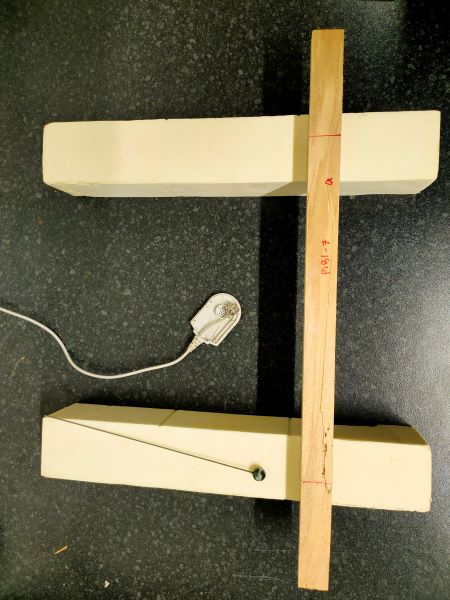
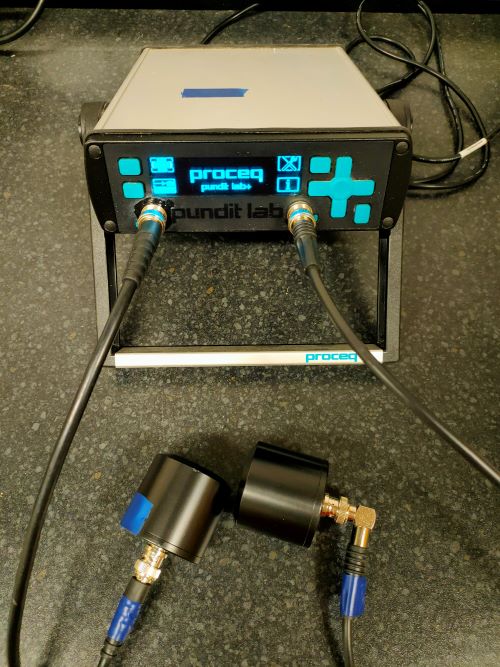
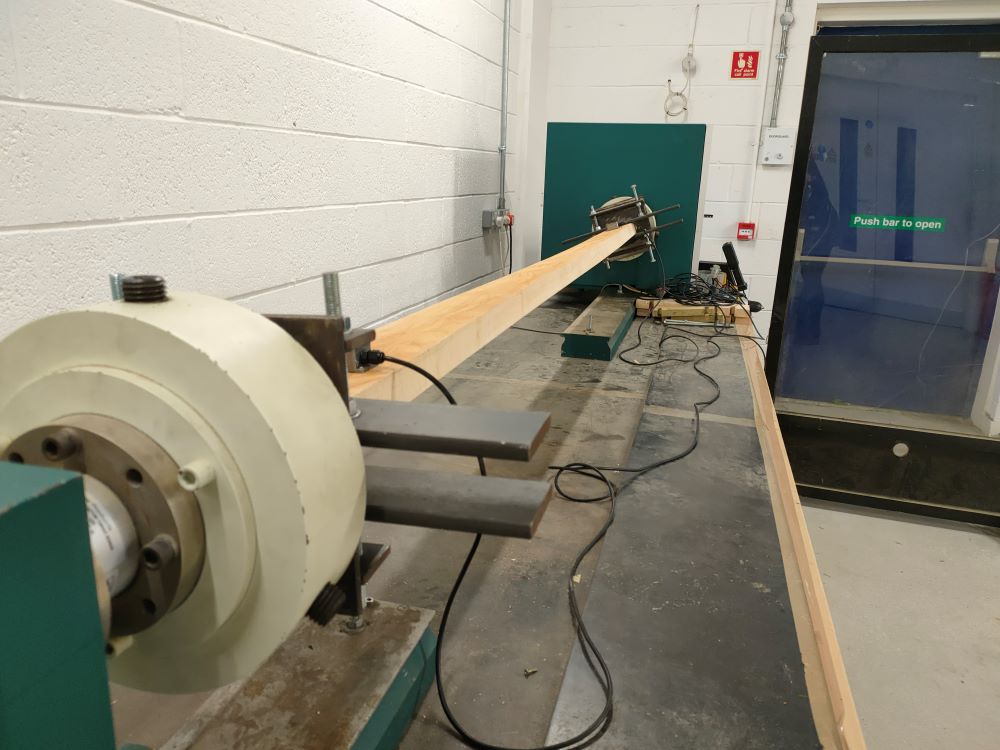
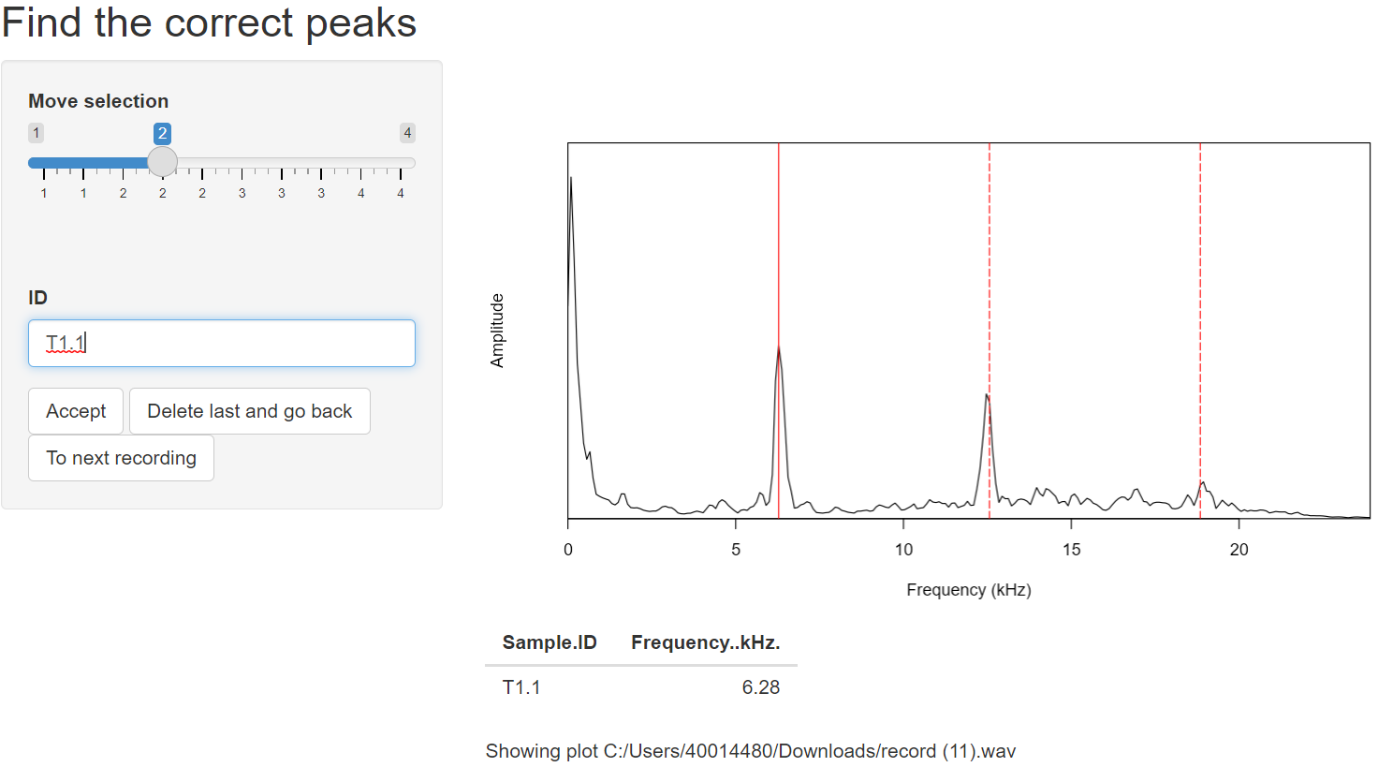
The large specimens have also undergone a non-destructive torsion test. The specimen is clamped on one side and twisted from the other end at a constant speed. The torque is continuously measured, and from the load-deformation curve the shear modulus can be calculated (according to EN 408).
After these non-destructive tests, we finally get to break some timbers. On the large specimens, we have done a standard 4-point bending test with transducers that measure deformation so that we can calculate both local and global MOE (also according to EN 408).
The ends of the broken specimens are usually unaffected by the bending test, and so the specimens are re-sawn for more testing. We have also found a stack of sycamore and birch from earlier testing, and we have been re-sawing them as well. This way we produced full-size specimens for testing compression strength parallel and perpendicular to grain (still according to EN 408). We also made some specimens for fire tests, and the University of Edinburgh will have a student project for looking at charring rates and ease of ignition for the sycamore, ash and some softwood species. We also cut smaller specimens for hardness tests, fastener withdrawal tests and compression strength perpendicular to grain (according to BS 373 – let’s see if the difference in specimen size influences the results).

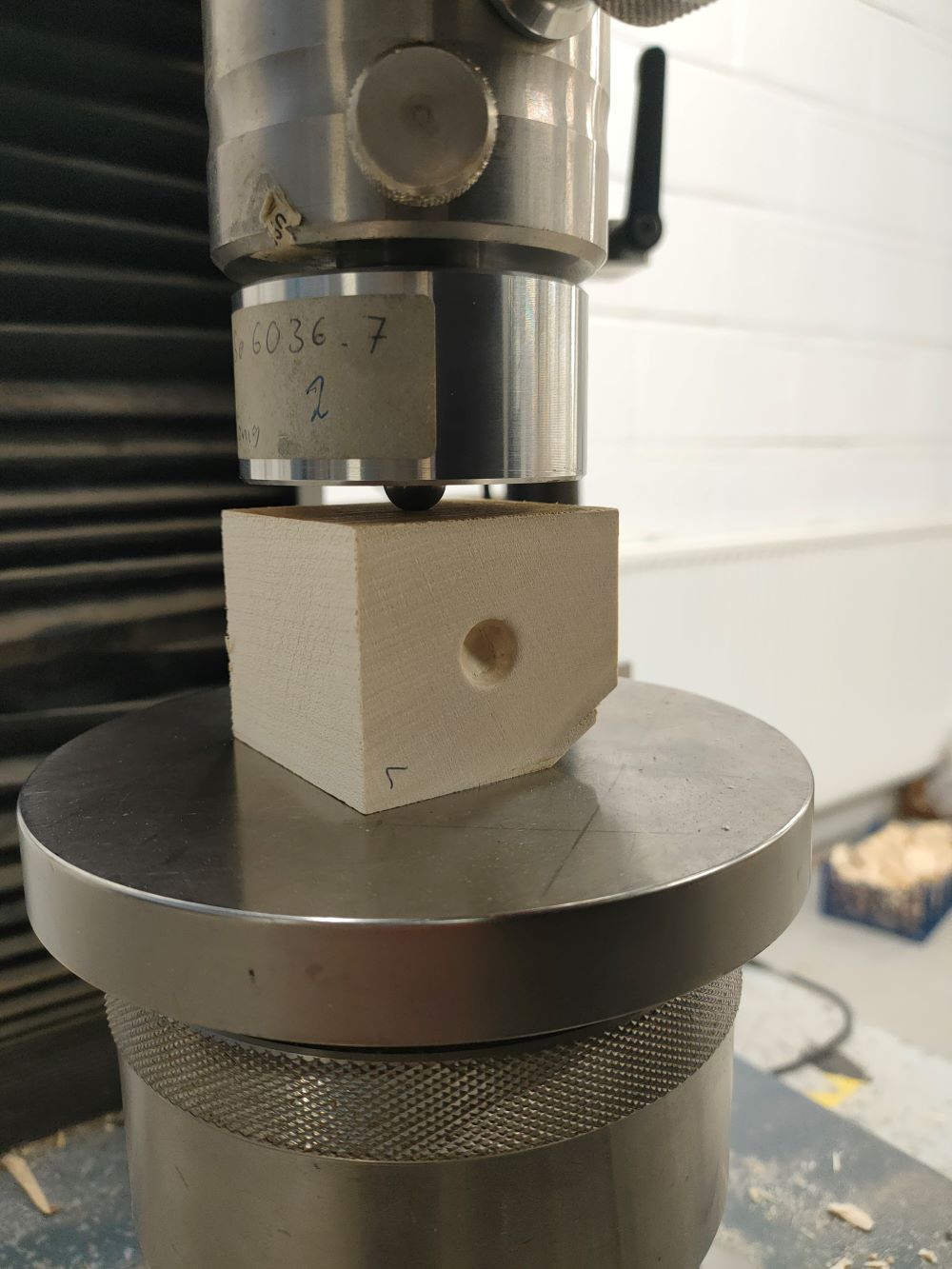
So far I have completed the compression tests perpendicular to grain on the small specimens (135 tests) and 329 hardness tests. I will have a look at the data when the other sizes have been tested too, and I will probably talk about compression strength perpendicular to grain and how it is affected by test method and specimen size at the 11th hardwood conference in May.
Outlook
The next steps look pretty much like what I have done so far. We have a lot more material that needs testing, including the timber from the logs once it’s sawn and dried. Since we have a lot more material in the second batch, we will do more full size bending tests, but we will still cut small (clear) specimens for characterising secondary properties and investigate how these are related to bending properties and how they might be influenced by specimen size, test set-up and moisture content. The whole plan is summarised here:
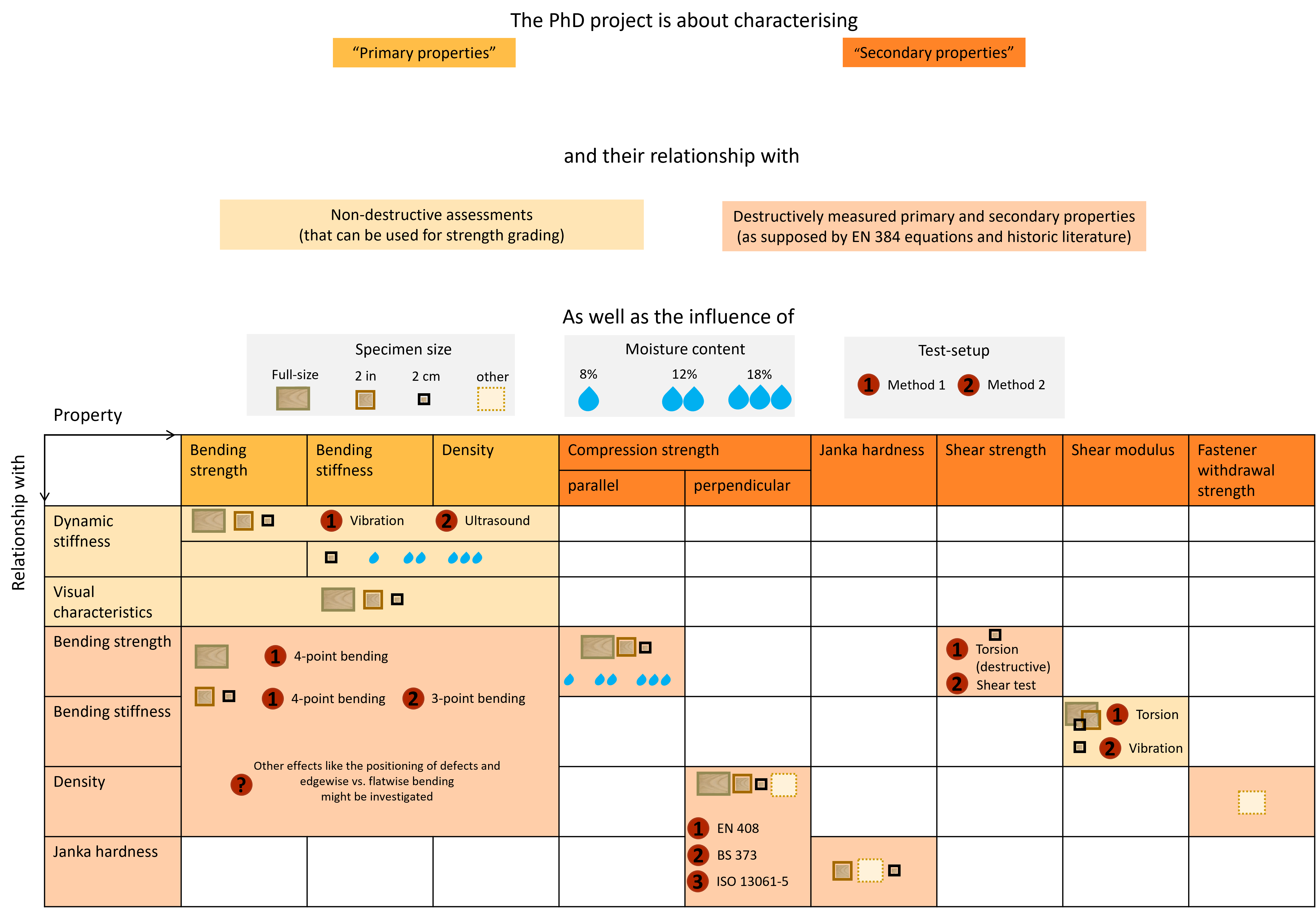
We also have a large sample of birch from Sweden to test, and this will from the largest part of the data to support the idea of a simpler grading approach. A project at the Research Institute of Sweden (RISE) has already done the full size testing of this birch, and we have used the ends of the bending specimens to cut small (clear) bending specimens. This will give me enough data to investigate the differences between both sizes, especially differences in the relationships between NDT and destructive testing, without me needing to do too many tests… Only about 1000 small bending tests!
This all will take me until mid-2025, but hopefully I’ll have some updates before then.
